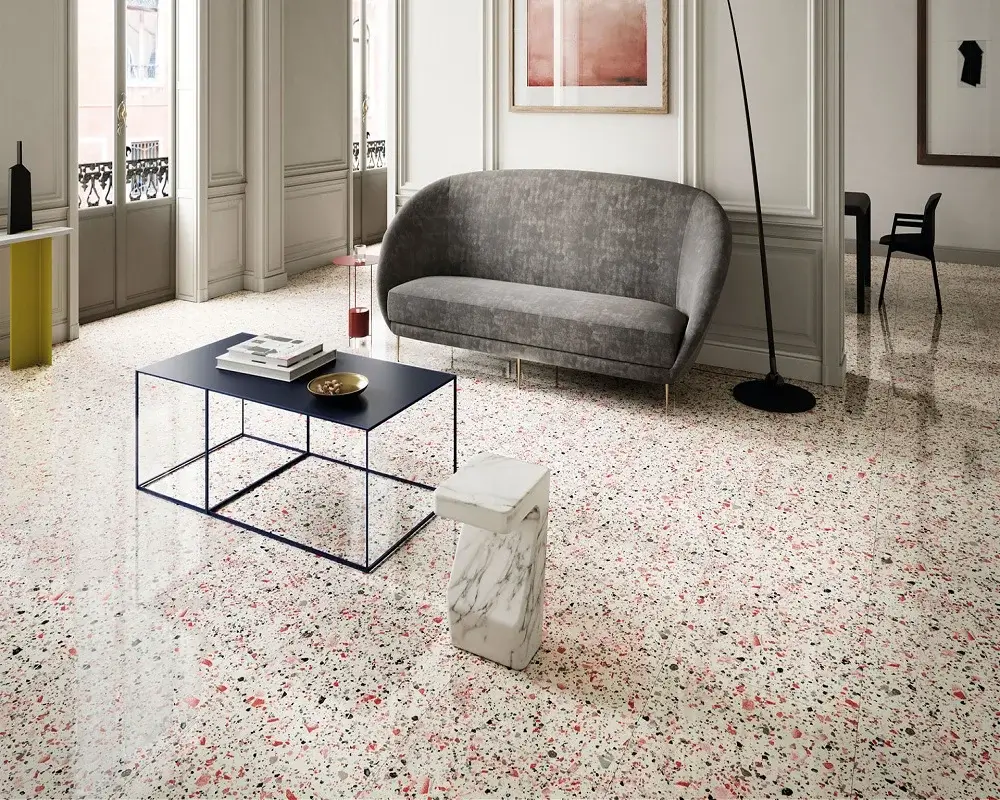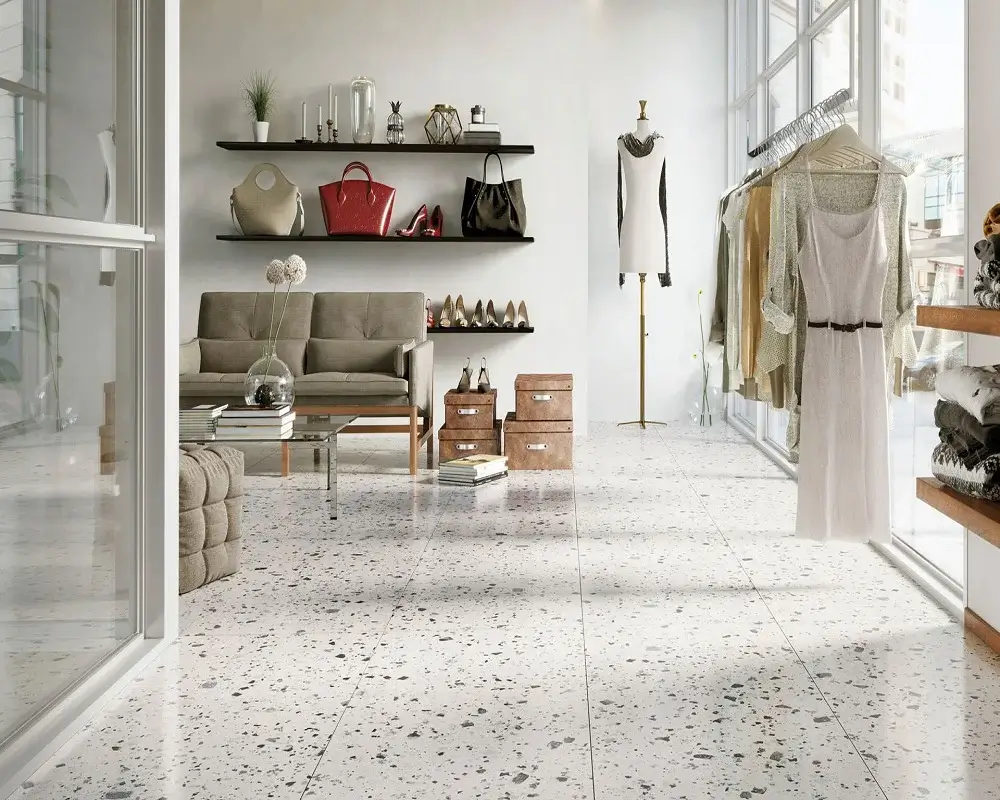FAQ
A: Terrazzo flooring is typically composed of a mixture of crushed aggregates, such as marble, quartz, or glass, combined with a binder, which is commonly cement or epoxy.
A: Yes, terrazzo flooring is highly durable and known for its long lifespan. It is resistant to stains, scratches, and wear, making it suitable for high-traffic areas.
A: Terrazzo flooring is relatively low maintenance. Regular sweeping or vacuuming, followed by mopping with a pH-neutral cleaner and warm water, is typically sufficient. Avoid using harsh chemicals or abrasive cleaners.
A: Absolutely! Terrazzo flooring offers a wide range of customization options. You can choose from various aggregates, colors, patterns, and finishes to create a unique design that matches your aesthetic preferences.
A: Yes, terrazzo flooring can be used outdoors. It is weather-resistant and can withstand various climatic conditions. It is a popular choice for outdoor spaces such as patios, walkways, and pool decks.
A: The cost of terrazzo flooring can vary depending on factors such as the type of aggregates used, the intricacy of the design, and the size of the area to be covered. It is recommended to contact a terrazzo flooring specialist for an accurate cost estimate.
A: In some cases, terrazzo flooring can be installed over existing floors. However, it depends on the condition and type of the existing flooring. It is best to consult with a professional installer to determine the feasibility of installation over existing floors.
A: Yes, terrazzo flooring is considered eco-friendly. It often incorporates recycled materials, such as glass or stone remnants, reducing the need for new resource extraction. Additionally, its long lifespan reduces the frequency of replacements and associated waste.





